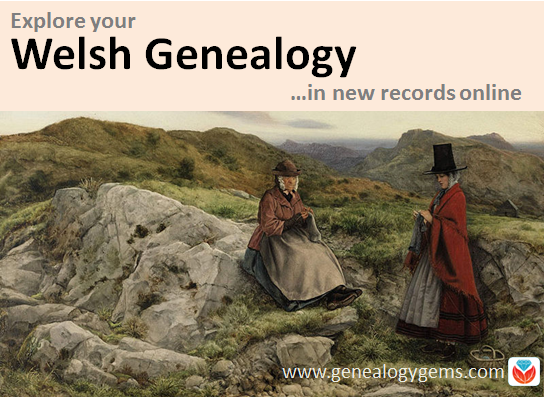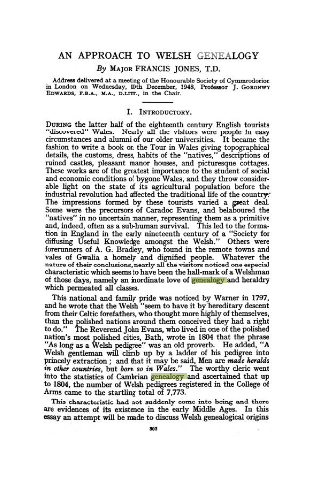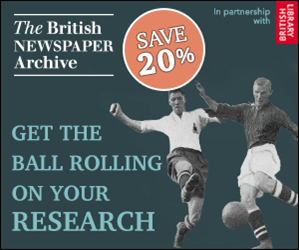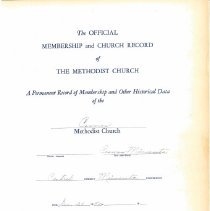How to Research Witnesses for Genealogy Success
Show Notes: You may not have been around when your ancestors lived, but there were witnesses to the important events in their life. Genealogist Robyn Smith shares her 3 step process from her new Family Tree Magazine article called Witness Testimony.
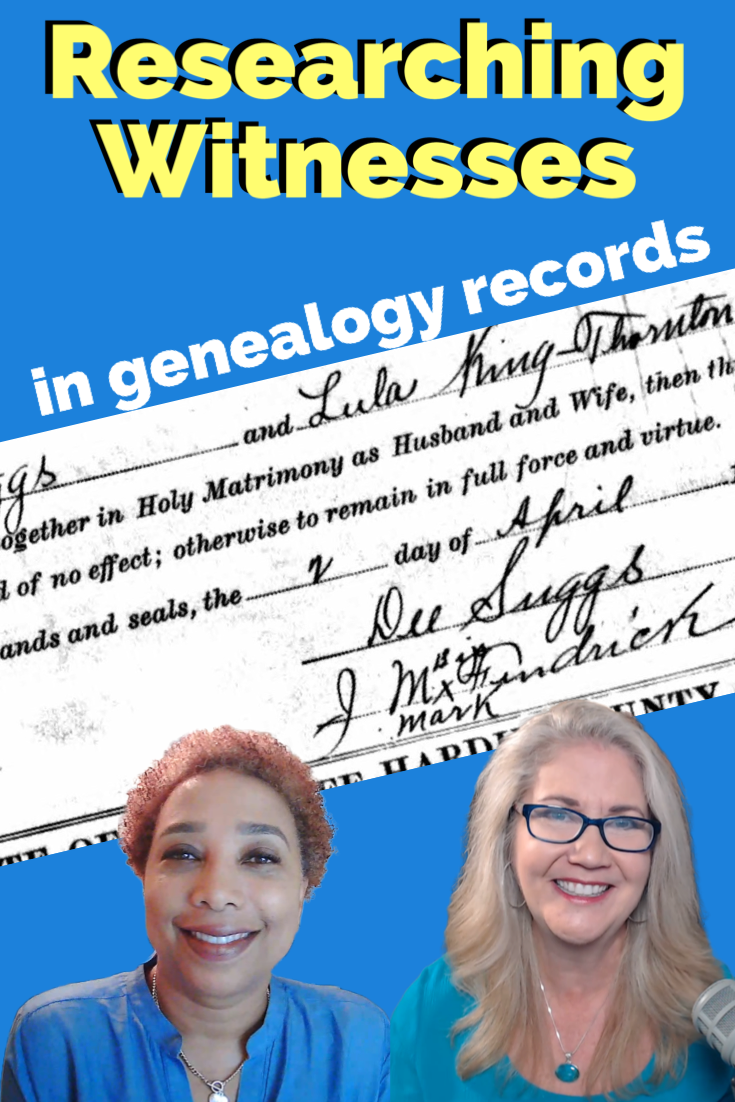
Pin it on Pinterest! Free Genealogy Video
Get ready to find out how the witnesses named on your ancestors’ records can help you bust brick walls in your genealogy research!
Watch the Video Interview
Show Notes
(This interview has been minimally edited for clarity)
Downloadable ad-free handout with time stamps and links. (Premium Membership required)
Why You Should be Researching Witnesses
Lisa: I learned a lot from your article in family tree magazine. And I wanted to chat with you a little bit about that, because I think researching our ancestors’ witnesses is fascinating, and it’s something that people don’t always think about. We may focus on the names we recognize and not so much on the ones that we don’t. I’d love to have you give your “elevator speech” if you will, as to why people should be taking the time to research witnesses.
Robyn: Most of us in the genealogy community eventually hear about this thing called “cluster research”. We hear this phrase, the FAN club that genealogist Elizabeth Shown Mills describes, where we take a look at the Friends, Associates and Neighbors of our ancestors. I would consider witnesses and bondsman in that FAN club, in that cluster.
Simply put, witnesses can help us find more family. That’s the benefit of researching these individuals and the records in which they find them. We can break through some brick walls. And this type of research can also tell us about the community ties and some of the customs in that time and place. So, witnesses and bondsman are always my secret research strategy.
What is a Bondsman?
Lisa: You mentioned bondsman, and that might be a new term for some folks. We might be used to seeing perhaps an immigration record or a birth record, and we see witness. What is a bondsman?
Robyn: This is one of those terms in genealogy that has a slightly different meaning historically than it does today. By bondsman we just mean someone who pledges a sum of money as a bond for another. Sometimes in these records, we might see that they’re called a Surety. You might see that term used. The difference between that and a witness is that there’s a financial obligation involved. I always try to tell people, it’s similar to cosigning a loan today. Most of us would probably not cosign a loan for people that we didn’t trust or that we didn’t know very well. And so, if you can keep that concept in your mind, that’s the value and the benefit of researching those witnesses and bondsman.
Lisa: Yes, when there’s a financial tie, there’s some kind of relationship there. And I guess if we can research them, that might lead us back to even more records about our own ancestor.
Genealogical Records that Include Witnesses
What kind of records will we find them in? In what type of records are we going to find witnesses and even more specifically, this term bondsman?
Robyn: The big one we think of, of course, is marriage bonds. We hear that phrase a lot. We may see them in marriage records, almost all deeds are going to have some sort of witness involved, and wills. Also, in probate records we will see executors and administrators often have to have bonds. If you’re going to serve as guardian to someone, typically, that person has to have a bond as well. And so those are sort of the big ones.
We can also think of court cases, civil court cases when you’re trying to secure someone’s appearance at a future court meeting. And I actually have seen the courts go after that bondsman if that person doesn’t show up. So, some of these records can get pretty juicy.
And of course, I think a lot of us are probably familiar with pension, military pension records and southern claims.
The only thing that I would caution people to watch out for is sometimes the witness is really just the county clerk, a local lawyer or local justice of the peace. So, it’s in researching that witness or that bondsman that you’ll find out the relationship if there is any, to the person of interest that you’re researching.
Lisa: That’s a really good point.
The Goal of Researching Witnesses in Records
Do you go after witnesses primarily because you’re wondering if they are related? Or is it also about that FAN principle where they may not be related, but researching them might actually lead me to more records about my own ancestor because of their will, depending on what the relationship was? Do both of those play into the way you approach them?
Robyn: I would say both. I’m actually really excited when I see a witness or bondsman because the curiosity serves you very well, in genealogical research, as we know. It’s a good thing to be a nosy genealogist. I want to know, why is that person there? That’s the question that I’m trying to answer. And more than a few times, it has led me to more family that I didn’t know about, particularly if that individual had a different surname.
Now, another gotcha is that sometimes they end up in the records with just their initials. So, we first have got to confirm who that person is before we’re ready to say that they’re related to our person of interest. So, there are some cautions that we may need to be aware of as we’re doing this research. But it’s another stone to overturn as you’re doing your research. And I love it when I see a person listed in a record. I’m excited!
Lisa: Me too! I feel like oh, my gosh, I finally have another avenue that I can pursue, particularly in a brick wall situation.
3 Step Process for Researching Witnesses
In the article, you provide a three-step research process. Will you walk us briefly through that process?
Step 1: Transcribe the Document
Robyn: The first thing that I do when I find a document concerning my ancestor that has a witness or bondsman, is to transcribe the document. I want to make sure that we all are comfortable with the practice of transcribing. Transcription ensures that you are actually reading every single word in that document. It’s going to help you notice all of the details that you might miss if you are just looking at it in its current format.
There are a lot of great free tools available to us for transcribing. There’s GenScriber, or there’s Trint. I would also recommend Family Tree Magazine’s cheat sheet on reading old handwriting. That becomes very handy when you’re doing this transcription.
Step 2: Do the Research
The second step is to then do the research. I always say you want to research in a variety of records. I actually research the person as if they were my ancestor already. That means I’m looking in census records and deed records and court records and everything else trying to establish who this person is. And the things that we learn along the way, are not just that this person is in this time and place, which is very important to us as genealogists, but it also gives us a hint as to how old the person was. It also gives us a hint about their literacy in terms of whether they sign with their mark or whether they sign with a signature. It is in this second step, doing the deep research, that you probably will uncover whether or not the person is related to your family.
Step 3: Research the Law
The third step is to research the laws because as we know, laws governed everything about the sources that we use a genealogy. They’re going to govern who can serve as a witness and a bondsman, how old that person has to be, and also how many were necessary.
We need to be aware that these laws are going to differ from state to state or colony or a locale and also throughout time. I look at the published date laws that I can find in databases like Internet Archive and Hathi Trust and Google Books but you and also visit your local library, law library, or archive. You may have to do some deep digging.
Those are the three steps that I recommend: transcribe the document, research the individuals you find, and make sure that you research the laws.
Lisa: Fantastic advice!
The Power of Transcribing Genealogy Records
I’d love to ask you a little bit more about transcription because I think that is a step that can be tempting to skip. People think, oh, well, I read it, I want to get going! I want to add people to my tree, and they are tempted to not take the time to transcribe. Will you tell us a little bit more about transcription? Why should we take that time? And what are we looking for, instead of just typing the words?
Robyn: Transcription to me is one of the basics of one of the basic genealogical skills I think we need to master in order to be successful, particularly once we start going back further in time and encountering those much more complicated problems. And it’s one of those basics that will remind you, if you don’t do it over and over again, that there’s a reason why it’s recommended in genealogy.
I can’t tell you how many phrases I’ve realized that I don’t fully understand as I’m transcribing. And Step one is to understand what that document is telling you. So, if there’s a phrase that I come across, I might email an archivist, or I might call one of my genealogy friends who’s got a little bit more experience in that particular time and place. Transcribing helps us to do that, and it helps us to understand.
When I transcribe, I also typically turn it into an abstract. I’m also making sure that I do a citation. So, to me, those are the building blocks of successful genealogical research.
I would also include keeping a research log and have a research plan. Those to me are very critical research building blocks to long-term success in genealogy.
I understand the impulse to want to skip transcribing. But I can tell you over and over again that I come across phrases that I thought I knew, but once I’m transcribing it, I really realized that I don’t. There are lots of wonderful webinars and classes that you can take on transcription that can teach you simple rules when you’re transcribing, and they’re easy to learn. They’re not complicated rules. And I think that once you start doing it, you’ll get more comfortable with the process. It will really become second nature.
I hope that I can encourage everyone with our conversation to do more of that transcribing. I did a lot of it earlier, not necessarily knowing or understanding all the rules, and now I’m going back and sort of revisiting those documents. It’s always amazing when things will jump out at you that you didn’t notice before, or it just didn’t resonate.
I always recommend having a genealogy buddy. You can say to them, hey, can you take a look at this and tell me what you see? You can have a fresh set of eyes look at it and ask you a question. I’m a genealogy junkie, so I find all of this really, really exciting to me. I kind of lean into it. We’ve all got other things to do in our lives. I try to do an hour here and there; it might be an hour this weekend. But I’m sort of just always working towards a goal. And that transcription, I tell you, that’s a key first step!
Witness Research Example
Lisa: I don’t mean to put you on the spot, but do you have a witness story or just something that you spotted that you just would love to share with us?
Robyn: I do! My mother’s family, my maternal family is from Tennessee. I was researching my second great-grandfather, Mike Fenricks in Tennessee, where he lived. Almost every source in his life asserts that he was born in Alabama. And so, this is a problem that a lot of genealogists have. I had no idea where in Alabama I’m even though I thoroughly went through all of the sources that were available in that time and place.
I noticed that he served as bondsman to a man named Dee Suggs. And then I noticed that he jointly took a couple of sharecropping deeds with this same man Dee Suggs.
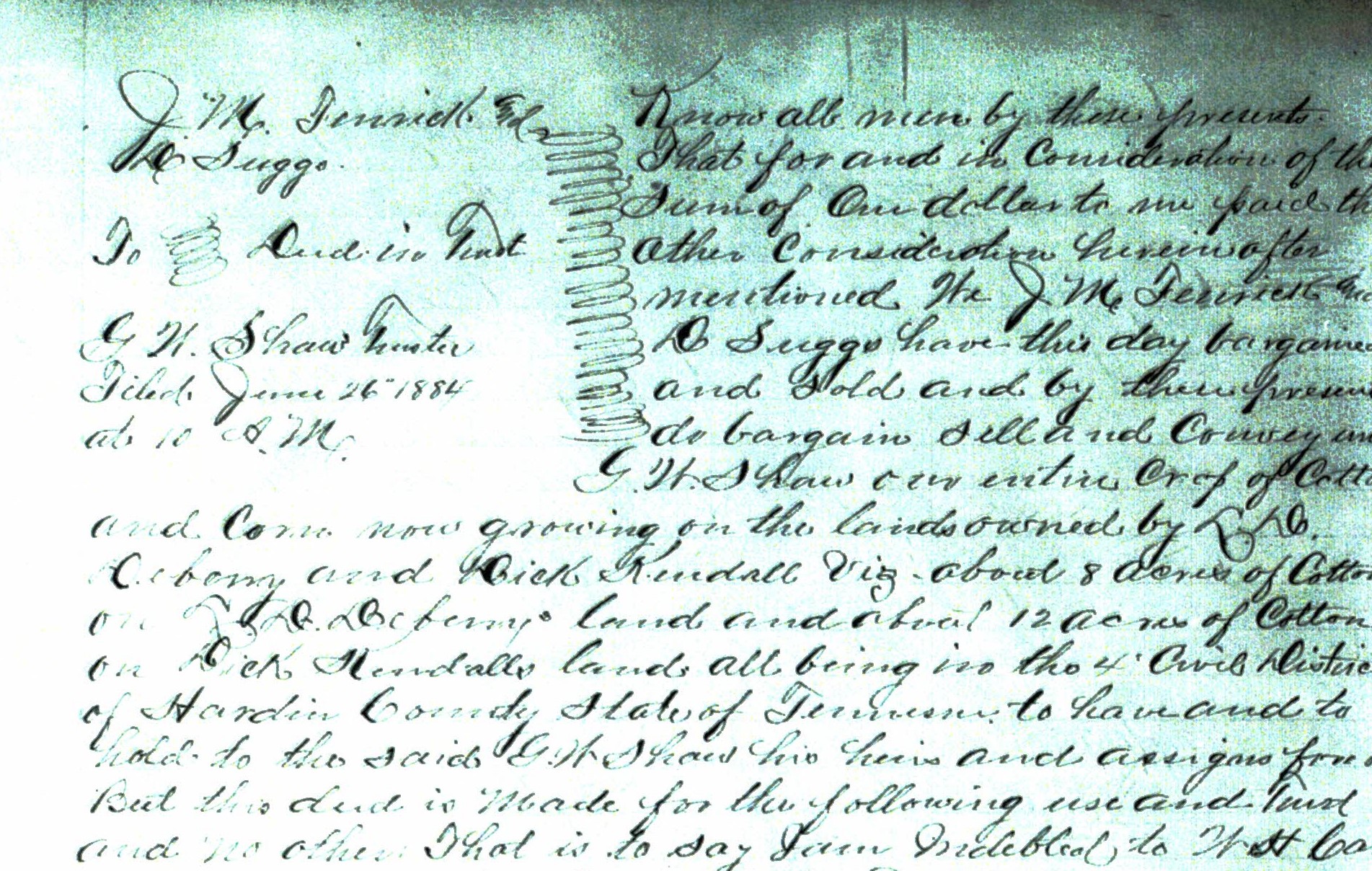
Sharecropping Deed: JM Fenrick and Dee Suggs
I also found him living in Dee Suggs’ house in 1920. So, the wheels start turning! Why is he interacting with this man and Dee Suggs who was also born in Alabama?

The Dee Suggs household in the 1920 U.S. Federal Census
So, when the records ran out, for my ancestor, I started researching Dee Suggs. And where did this witness lead me? Dee Suggs led me back to Lawrence County, Alabama. And in that 1870 census household was a man named Mike. And that man ended up being his brother, it was his half-brother. And the same man is my second great, great grandfather. They had migrated to Tennessee together. They had been formerly enslaved, and I found a Freedmen’s Bureau contract that their mother signed where she calls all of them, her children. The 1870 census doesn’t provide relationships, so I had that critical labor contract that said, Sofrona and her four children. And so, it makes all the sense in the world why he’s associating with him and living with him, and jointly, promising bond for him. It is because they were half-brothers!
Lisa: I knew you’d have a great story!
Robyn: That story is the crux of my cluster genealogy lecture that I do. I go into more details, but following Dee is what led me to that community and his place of origin in northern Alabama. It was very exciting.
Learn more about Robyn Smith
Lisa: And I know you bring many stories to your readers at Reclaiming Kin. Please tell us the URL address and what they will find there at your website.
Robyn: Thank you so much. The URL is www.reclaimingkin.com. I call it a genealogy teaching blog, and what I mean by that is, I might start off with something from my family history, but every single post is meant to teach a skill. And so, every post there talks about a methodology, a strategy or resource. It’s not just about my family history, it’s about helping all genealogists to grow their skills, and also meet the special challenges of researching the enslaved. I’d be really happy if your listeners would come to the blog, take a look, sign up for my mailing list. And I’ll send you a free PDF, all my favorite research tips.
Lisa: Robyn, thank you so much. We’ll all look forward to your article Witness Testimony in the Family Tree Magazine Jan / Feb 2023 issue. And I look forward to hopefully talking to you again soon.
Robyn: Thank you so much for having me on today, Lisa.
Learn more about Transcription
There’s so much more to learn about doing transcriptions! Check out my full-length Premium video class called Transcribing and Analyzing Historical Documents. It’s part of Premium Membership, and it is going to tell you everything you need to know about how to do transcription, the tools that I recommend, and so much more. And along with that video class, you also get the downloadable handout. Becoming a premium member has a lot of perks. Learn more here.
Resources
Downloadable ad-free Show Notes handout for Premium Members.



 Start by reading
Start by reading  The free
The free The
The
